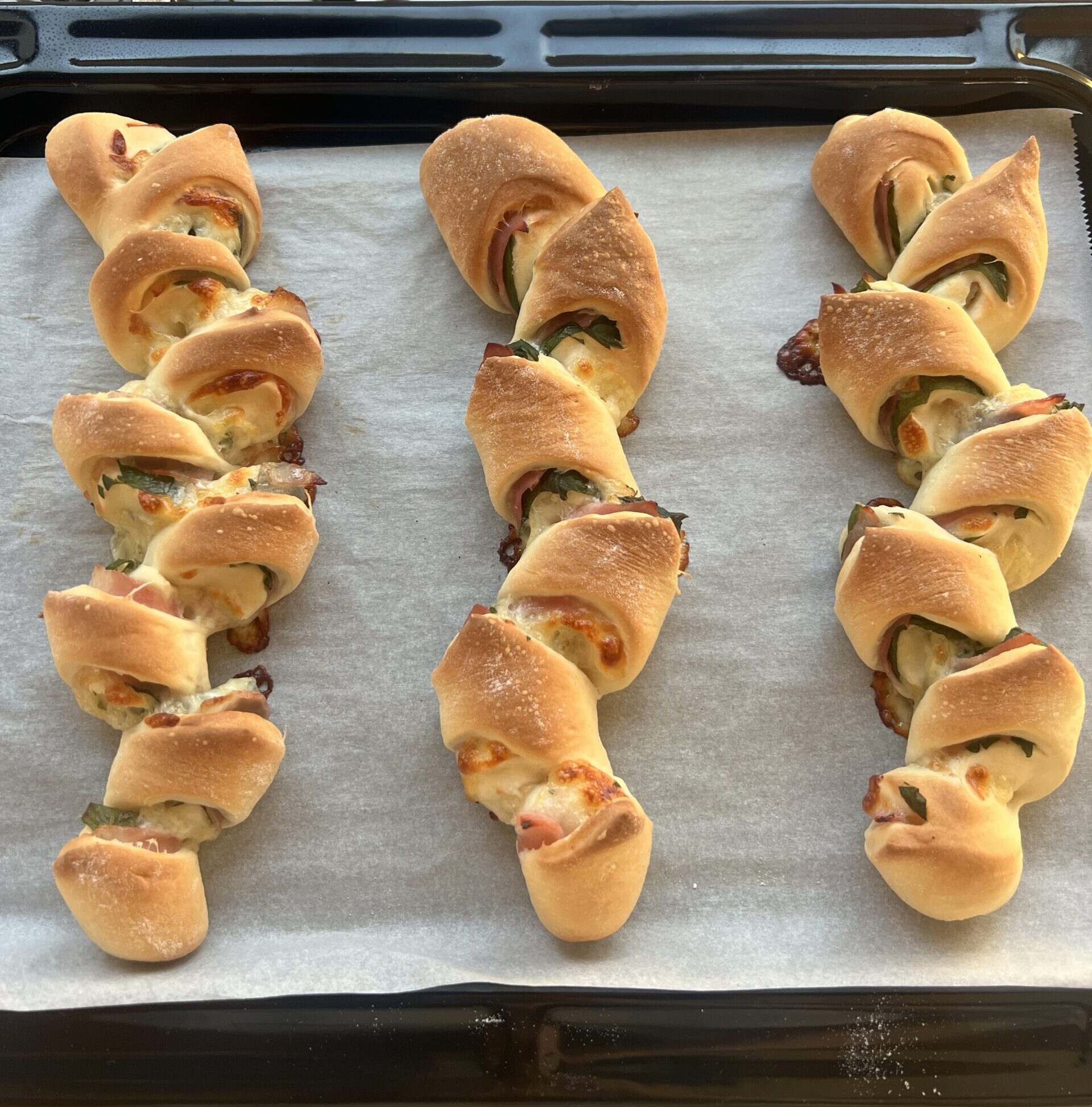
Epi bread, also known as pain d’epi or “wheat stalk bread” has been one of my absolute FAVORITE breads ever since I was little. Whenever I was visiting Japan as a kid in the summer, there was always a bakery I would stop by before I got on the bullet train and I ALWAYS got the bacon epi. I loved how every single bite was like an edge of a baguette and that each piece had bacon in it. Crispy. Simple. Delicious.
Of course just the bacon is wonderful but in this new version I am presenting to you today, I have added Shiso leaf AND cheese and LET ME TELL YOU — if I had seen that being sold in that Tokyo bakery as a kid, I would have gotten that one, maybe even TWO for my bullet train ride.
Also, I am very excited to be sharing this recipe with you because eating this bread fresh out of the oven (once it has cooled enough that you won’t burn yourself — I cannot be held responsible for burns sustained through eating FRESH bread out of the oven but it is my biggest battle trying to wait until the bread cools, too. I get it you guys!) is quite literally a new level of joy. Each pieces of the edges are crispy on the outside, fluffy on the inside, the cheese is melty, the Shiso leaf is fragrant, the bacon is — well perfect with all of the other flavors of course.
I can’t wait for you to try this delightfully joyful epi bread! FYI, this bread is a definite crowd pleaser at every single function I have baked these to. Not only is the appearance so fancy, it is the easiest bread to shape because all you need are scissors to get the fun pointy pieces. This bread is also a very difficult bread to mess up because even if you cut each of the pieces into different sizes, you get a variety of different textures with some edges being extra crispy!
As always, let me know if you bake this and tag me on all socials @takahasheats! Here for any and all of your questions and messages that you couldn’t wait until this bread cooled either 😉
Itadakimas!
